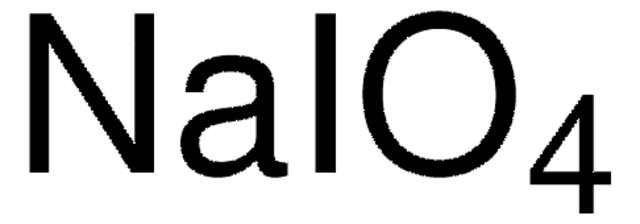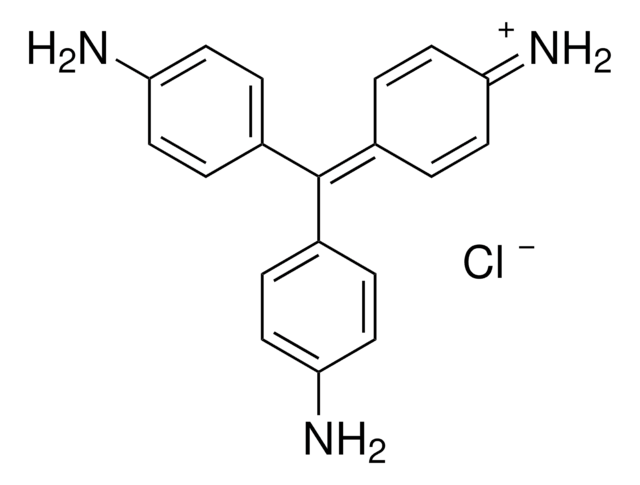311448
Sodium periodate
ACS reagent, ≥99.8%
Sinónimos:
Sodium (meta)periodate
About This Item
Productos recomendados
grade
ACS reagent
Quality Level
assay
≥99.8%
99.8-100.3% dry basis (ACS specification)
form
crystalline powder
reaction suitability
reagent type: oxidant
impurities
≤0.02% other halogens (as Cl)
pH
3.5-5.5 (25 °C, 107 g/L)
mp
300 °C (dec.) (lit.)
cation traces
Mn: ≤3 ppm
storage temp.
room temp
SMILES string
[Na+].[O-]I(=O)(=O)=O
InChI
1S/HIO4.Na/c2-1(3,4)5;/h(H,2,3,4,5);/q;+1/p-1
InChI key
JQWHASGSAFIOCM-UHFFFAOYSA-M
¿Está buscando productos similares? Visita Guía de comparación de productos
Categorías relacionadas
General description
Application
- In the selective oxidation of sulfides to sulfoxides.
- For the oxidative cleavage of a variety of 1,2-diols to generate aldehydes or ketones.
- In the oxidation of diaryl, dialkyl, and aryl alkyl selenides to the respective selenoxides.
- In the selective alkene epoxidation and alkane hydroxylation reactions.
- In the selective oxidation of activated cellulose to obtain dialdehyde cellulose (DAC) by cleavage of the bond between C2 – C3 in the glucose unit.
- It can also be used as an iodinating agent for the iodination of arenes and halo compounds.
signalword
Danger
Hazard Classifications
Aquatic Acute 1 - Aquatic Chronic 1 - Eye Dam. 1 - Ox. Sol. 1 - Skin Corr. 1C - STOT RE 1
target_organs
Thyroid
Storage Class
5.1A - Strongly oxidizing hazardous materials
wgk_germany
WGK 3
flash_point_f
Not applicable
flash_point_c
Not applicable
Certificados de análisis (COA)
Busque Certificados de análisis (COA) introduciendo el número de lote del producto. Los números de lote se encuentran en la etiqueta del producto después de las palabras «Lot» o «Batch»
¿Ya tiene este producto?
Encuentre la documentación para los productos que ha comprado recientemente en la Biblioteca de documentos.
Nuestro equipo de científicos tiene experiencia en todas las áreas de investigación: Ciencias de la vida, Ciencia de los materiales, Síntesis química, Cromatografía, Analítica y muchas otras.
Póngase en contacto con el Servicio técnico









